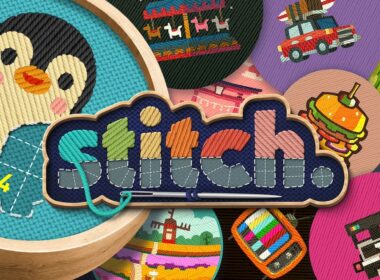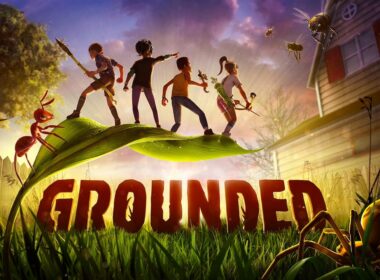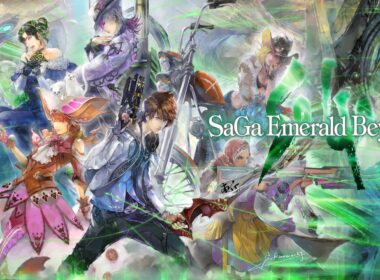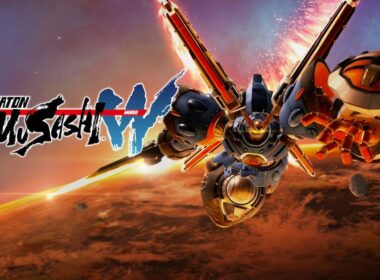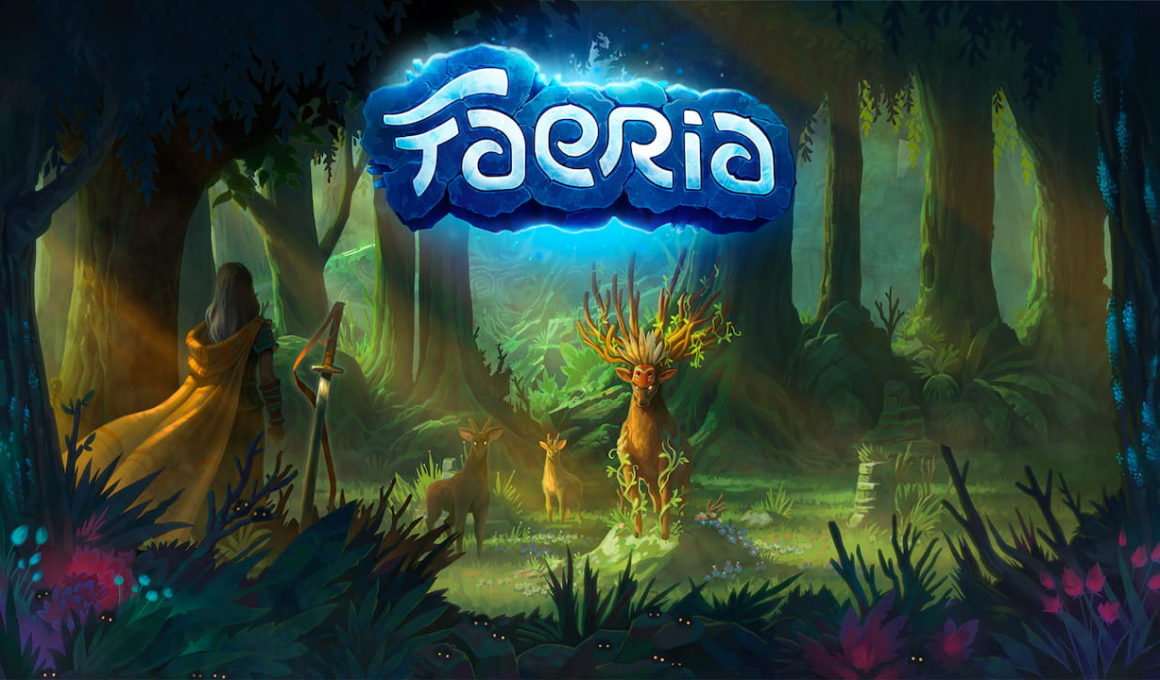I’m going to come clean right out the gate here, my level of familiarity with the Collectable Card Game genre is what you might call limited, to say the least. Sure, I got heavily involved in the Pokemon Trading Card scene back in school, buying booster packs and crafting the best grass and water type deck you’ve ever seen but fast forward to present day and that’s really where my involvement stopped. Sure, I’m fully aware of the likes of Hearthstone, Gwent and Magic the Gathering either through friends or whenever they’ve cropped up in the news but never have I dabbled for myself – largely due to the intimidation I’ve found that comes with learning games of these sorts. So, reviewing a title like Faeria is certainly exciting – this being my first real CCG foray in quite some time – and an experience that could have easily pushed me further from the genre. Fortunately, Faeria does quite the opposite.
What’s immediately interesting about Faeria is that it isn’t purely a card-based game but actually features some rather interesting board game-style elements too.
Battles take place on a large grid of hexagonal-shaped tiles with each player’s hero sitting on opposite sides at the top and bottom. To win you’ll need to place land tiles (which come in five different terrains including desert, lake, mountain and forest) across the initially watery grid working your way toward your opponent and inflict enough damage to their hero using cards to summon creatures or perform other violent attacks. That’s the abridged explanation but of course, like any good card game worth your time, there are so many more layers to unravel.
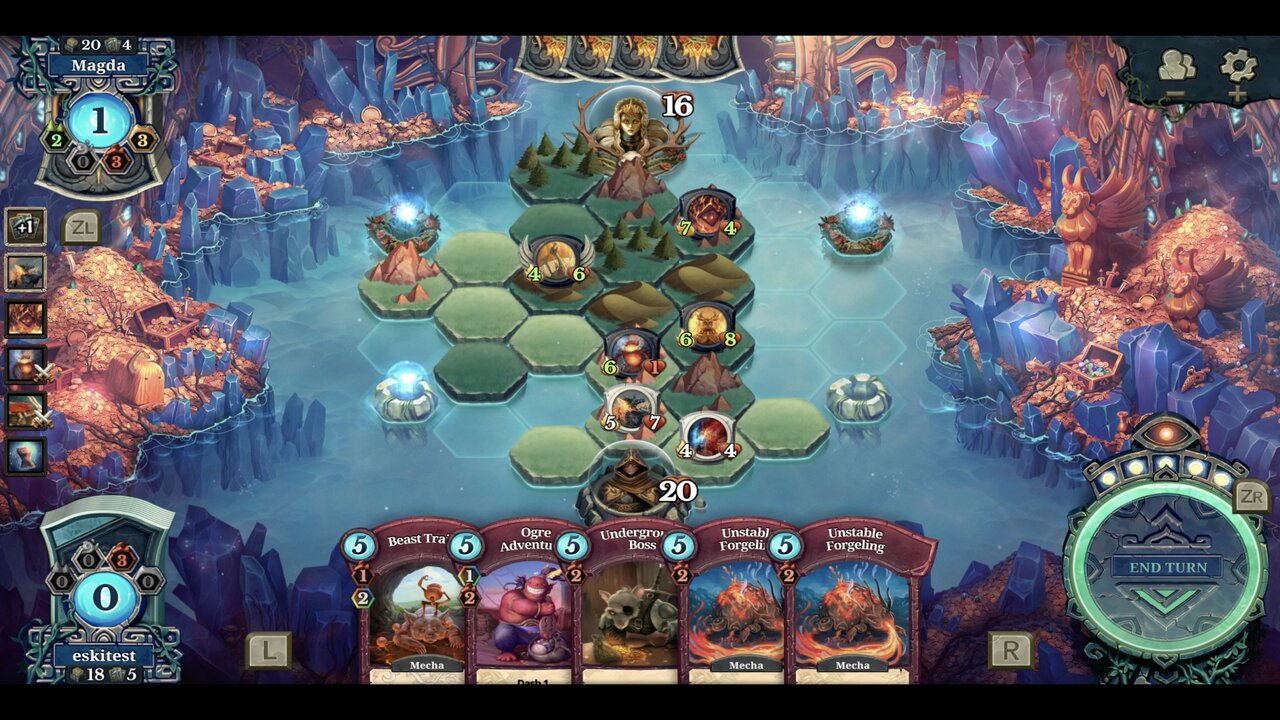
The cards themselves are your real means to actually attack (or even defend) with each costing you ‘faeria’ (think magic/mana points). Some cards are one-time use and cause some sort of effect on the game while most take the form of creatures that you place on the grid itself and move around to attack others. Along with a ‘faeria’ cost, each creature also has tile type requirements you’ll need to meet in order to summon them, health and strength stats and oftentimes unique effects such as attacking any surrounding enemies when played or being able to draw an extra card. Some creatures even have abilities that influence their movement beyond a single tile at a time such as only being able to move across water and lakes or charging across multiple tiles in a straight path.
Each turn in Faeria brings with it a multitude of options that at no point felt intimidating and troublesome to lean. After you’ve been awarded your three ‘faeria’ points and drawn a new card from your deck you’re then free to use any number of cards in your hand (so long as you meet the ‘faeria’ and land type requirements), move creatures already on the grid and attack. You’ll also have the choice of four actions; creating two standard land tiles, one of the special types, draw a card or gain one extra ‘faeria’. It’s this final choice that can prove especially useful especially in situations where you might be desperate to block off your opponent with a land tile of your own or simply have no cards left in your hand and cross your fingers the next drawn card will be a creature.
Faeria manages to combine its card and board-based gameplay in a way so that both are able to shine and both offer a tonne of potential for strategy and options. Obviously when it comes to the card side of things, like any CCG, building your deck offers you complete freedom to try out new combinations. Do I go for a deck that leans more into lake-based creatures for example? Do I also opt for cards that require higher ‘faeria’ and therefore take a little longer to actually play? This feeling of discovery and experimentation is only furthered as you unlock new cards from chests and beating missions (more on this later).
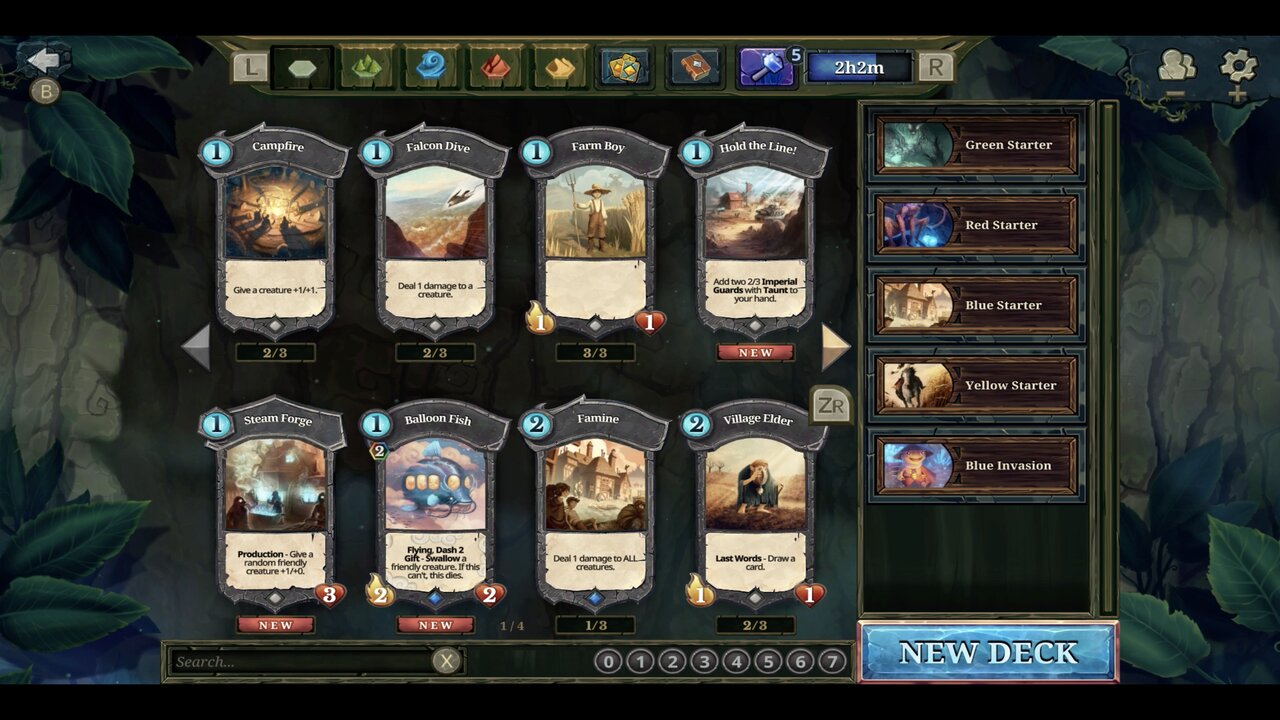
As for the tile-based gameplay, choosing where to place tiles and when can lend itself to all sorts of approaches. Some battles I find myself laying out tiles around my hero in order to build a strong army of creatures as defense while others I may try to reach my opponent as quick as possible or even direct my path toward one of the four ‘faeria’ wells on the grid that offer precious extra points of ‘faeria’ for every well claimed. The more I played, the more I found my approaches rarely remained the same between games which made each feel all the more exciting and dynamic.
The game has plenty to sink your teeth into and with new cards being unlocked regularly, your time feels like it’s being rewarded. Outside the lengthy campaign, you’ll also find a co-op mode, a competitive online option, puzzle mode (with the aim being to defeat the enemy in a single turn) and a mode that allows you to temporarily try out a random deck of cards which will likely contain new ones you’ve yet to unlock yourself. At first, I thought this game would be purely player vs player-focused but I have to say I am pleasantly surprised at how much there is to do if you prefer to play against AI at your own pace.
Everything about the game has a visually pleasing and polished look and feel to it whether it’s the battleground you’ll be facing off on or the art of the cards themselves. Important information is also clearly labelled or presented in a way that makes juggling your cards, the grid and your actions never become overwhelming. At a quick glance, I know immediately how many mountain tiles I’ve placed, how many ‘faeria’ I have stored and where I can place my next creature card. And this goes for playing in both docked and handheld mode. Despite the smaller screen of playing on the go, I had no issue at all largely thanks to the touch screen controls.
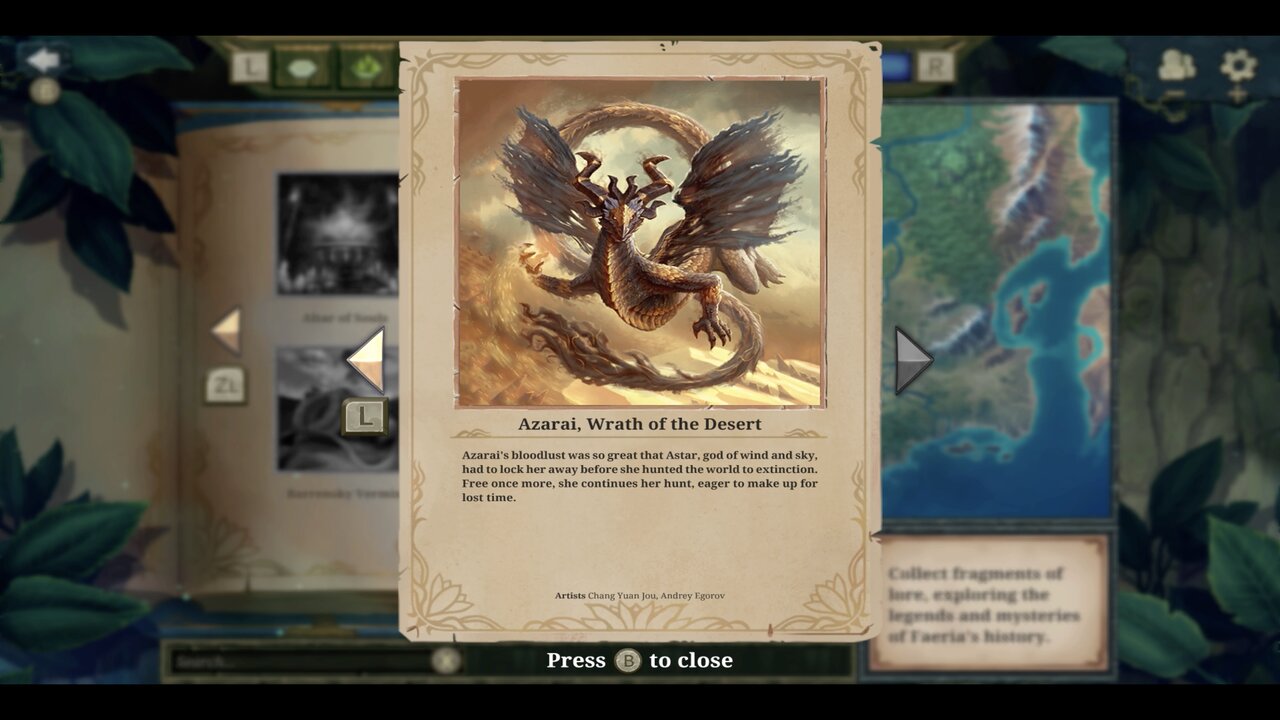
One thing that always concerns me when it comes to these types of games is how microtransactions are going to be implemented but I must say the approach Faeria has taken here is a rather refreshing one indeed. Rather than charging players for booster packs of cards with real money, every card can be earned through simply playing the game. Even better still is the fact that once you’ve reached a certain number of one type of card, you’ll never see it again. What that essentially means, is at a certain point you’ll have earned every single card in the base game and won’t find yourself accumulating fifty of a single useless card. Similarly, cosmetics such as card backs and avatars are all earnable through collecting coins by simply playing the game. While it’s great there’s no sign of microtransactions here too, I feel the rate at which you earn coins in-game can feel too slow especially considering the high prices of even the cheapest items in the store. The only thing that will cost you more money, are additional expansions for the game which seems totally reasonable.
Unfortunately, Faeria always requires you to be online in order to play, a severe limitation especially if you’re looking for a game to play when you’re out and about. Even more annoying is the fact you’ll get booted back to the main menu should you set your Nintendo Switch into sleep mode. It’s a real shame since this seems like the ideal type of game to fill a short commute to work or wait for the bus. It’s also strange considering this isn’t your typical microtransaction-filled affair and could quite easily do without always being online.
Faeria is packed with content without coming across bloated. It’s complex without ever feeling confusing or intimidating. Most importantly though it’s a fun and exciting time combining card and board game mechanics wonderfully.
Version Tested: Nintendo Switch
Review copy provided by Versus Evil

